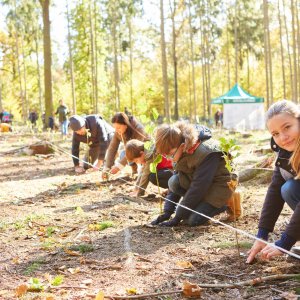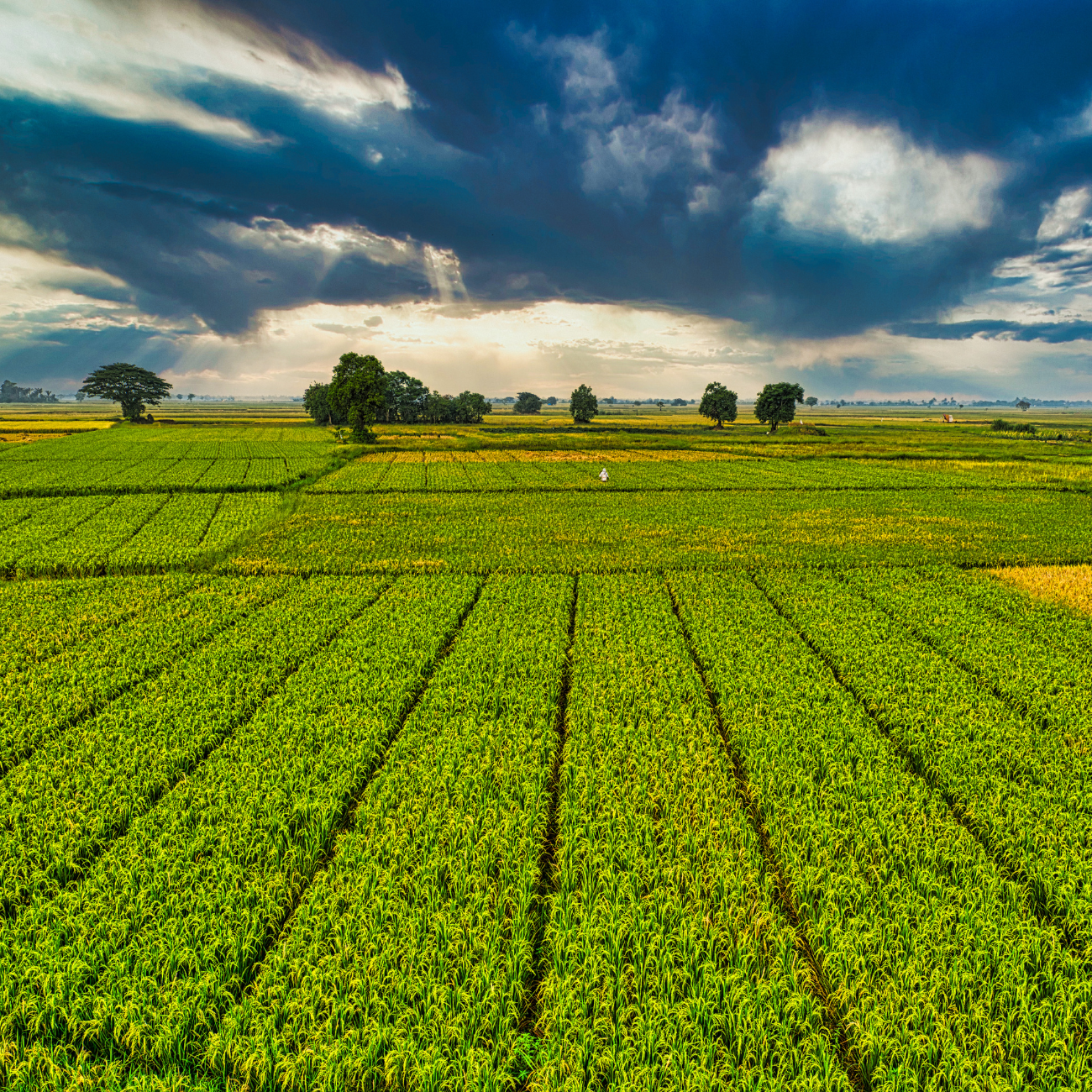By 2050, projections indicate that the world could experience significant food shortages if current trends continue. This scarcity may trigger a cascade of serious consequences, including conflicts over resources, widespread displacement of populations, and increased competition for arable land. As communities struggle to secure sustainable food sources, we may witness escalating tensions both within and between nations, leading to mass migrations as people flee inhospitable environments. Addressing these looming challenges through proactive policies and sustainable agricultural practices is crucial to ensuring food security for future generations.
The climate crisis is a big challenge that needs quick action. The American Society of Landscape Architects (ASLA) has made a detailed climate action plan. This plan aims to fight global warming and help create a sustainable future. It sets a goal for 2040 where all landscape projects will have zero emissions, bring economic benefits, tackle climate injustices, and fix vital ecosystems.
This plan focuses on three main goals: Practice, Equity, and Advocacy. It plans to increase climate positive actions, help communities fight for climate justice, and create groups for climate action. The ASLA Climate Action Plan wants to change the landscape architecture field. It aims to lead to a greener, more resilient future.

Key Takeaways:
- The ASLA Climate Action Plan outlines a comprehensive strategy to combat global warming and create a more sustainable future.
- The plan is rooted in three key goals: Practice, Equity, and Advocacy, aiming to scale up climate positive approaches, empower communities, and build coalitions for climate action.
- The plan envisions a 2040 future where all landscape architecture projects achieve zero emissions, provide economic benefits, address climate injustices, and restore ecosystems.
- The plan is part of a growing national movement, with 28 states in the U.S. having released their own climate action plans as of 2021.
- Landscape architects play a crucial role in shaping a greener, more resilient future through the implementation of the ASLA Climate Action Plan.
What is a Climate Action Plan?
A climate action plan is a detailed strategy. It outlines how a community or organization will tackle climate change. The American Society of Landscape Architects (ASLA) has made its first climate action plan. It follows the International Federation of Landscape Architects (IFLA) Climate Action Commitment. This commitment was signed by over 70,000 landscape architects in 77 countries.
Understanding the Importance of Climate Action.
Climate action plans are vital for tackling climate change. They offer a detailed plan for communities and organizations. This plan helps to mitigate climate change effects, improve climate resilience, and push for climate justice.
Key Goals and Initiatives of a Climate Action Plan.
The ASLA’s climate action plan has several main goals and actions. These include:
- Scaling up climate positive landscape design and management
- Helping communities achieve climate justice and fair climate solutions
- Creating coalitions and partnerships for worldwide climate action
The plan also focuses on areas like carbon drawdown, climate resilience, climate agency, cultural empowerment, climate leadership, and global alliance.
With a thorough climate action plan, communities and organizations can act early to lessen climate change effects. They can promote sustainable practices. This leads to a more resilient and fair future.

The ASLA Climate Action Plan.
In 2021, the American Society of Landscape Architects (ASLA) launched its ASLA climate action plan. This plan sets a strong goal for the future. It aims to make all landscape projects zero emissions by 2040. The plan also focuses on economic benefits, fighting climate injustices, and healing ecosystems.
The ASLA climate action plan has three main goals:
- Practice: Scaling up climate positive approaches in landscape architecture projects
- Equity: Empowering communities to achieve climate justice
- Advocacy: Building coalitions to drive climate action and policy changes
This plan includes 21 objectives and 71 actions. These will be checked and updated every five years until 2040. The ASLA climate action plan is a detailed guide. It shows how landscape architecture can lead in creating climate resilient communities and carbon sequestration through green design and planning.
“The ASLA Climate Action Plan sets a bold vision for 2040 where all landscape architecture projects will simultaneously achieve zero emissions, provide significant economic benefits through ecosystem services, address climate injustices, and restore ecosystems.”
Climate Action Plan: Your Role.
The climate crisis might seem huge, but we can all make a big difference. By talking and leading our communities, we can bring about change. Individual climate action together with everyone else can start a big movement. It encourages others to live sustainably and support climate friendly policies.
Start the Conversation.
First, think about how you can lessen your carbon footprint.A massive change in mindset needed here. Then, talk about it with your loved ones and coworkers. Encourage them to live more sustainably too. By being a role model, you make climate conscious decisions and behaviors seem normal while motivating others to act.Media initiatives can raise awareness about climate change through dedicated programs. There’s no need to search extensively to find them. There readily available for screening from you tube. Additionally, there are business programs tailored for SMEs that focus on climate change objectives and sustainability.

Leading Communities.
Use connections in communities to push for climate friendly policies and practices. Go to city council meetings, talk to local leaders, and join community projects. By being active and speaking up for climate action, you can be a key advocate for change.
Individual climate action and community engagement are key to fighting climate change. Together, we can build a strong movement. This will help us make the big changes we need to save our planet.
“The greatest threat to our planet is the belief that someone else will save it.”
– Robert Swan
Rebuilding Systems for Climate Action.
To fight climate change, we must rebuild the systems and policies that cause the crisis. This means pushing for climate policy advocacy and systemic change at all levels. We need to change the energy grid and update old institutions.
Working together with different groups through cross sector collaboration and climate action coalitions helps us have more influence. This kind of action takes commitment but can lead to big changes.
Advocating for Policy Changes.
In 2021, the U.S. saw a record 28 extreme weather events that caused over $90 billion in damage. We need strong policy changes to fight this threat. People can push for:
- Legislation that moves us to renewable energy and cuts carbon emissions
- Policies that help communities adapt and get stronger
- Money for climate research, new ideas, and projects
Forming Strategic Partnerships.
Working with different groups, like businesses and community groups, can make our climate efforts stronger. By working together, we can:
- Use our resources and knowledge to bring about big changes
- Make sure climate efforts help those who need it most
- Create a strong group to push for big policy changes

“The time for small steps is over. We need big, bold actions to tackle the climate crisis.”
Climate Action Plan: Joining a National Cause.
We all have a chance to help the national climate movement and push for inclusive climate action. Everyone’s voice matters, especially for those most affected by climate change. By joining together, we can help make a world that’s just and sustainable.
One key step is to vote for political candidates who focus on climate change. It’s important to elect leaders who will make policies that help the planet. But we also need to support a movement that includes diverse voices and views.
- Get involved with local and national climate organizations to amplify the voices of marginalized communities in the climate justice movement.
- Participate in global climate strikes and demonstrations to show solidarity and demand urgent action from policymakers.
- Educate yourself and your community on the disproportionate impacts of climate change on low income and minority populations, and advocate for equitable solutions.
By joining this effort, we can help make a future that’s better for everyone. Our actions can lead to a climate action plan that helps all people, not just a few.
“The climate crisis has already been solved. We already have the facts and solutions. All we have to do is wake up and change.”
– Greta Thunberg
The road ahead won’t be easy, but together, we can make big changes. Let’s be the generation that takes action and leaves a better world for everyone.
Overcoming Challenges and Coping Strategies.
Fighting for climate action can be tough and draining. A survey by the American Psychological Association found over two thirds of Americans feel climate anxiety. It’s key to keep realistic expectations and be kind to ourselves to prevent burnout and keep our focus.
Climate experts say it’s better to avoid pointless arguments and focus on what we all value. Taking breaks to reconnect with nature, like birdwatching, can refresh us and remind us why we’re fighting.
But, climate action burnout is a big issue for those deeply involved in fighting climate change. Events like testifying or being part of climate advocacy can really take a toll on us. We need to balance our actions with self care.
Staying Focused and Motivated.
It’s important to understand that feeling climate grief and anxiety is normal. Learning to balance action with rest is key for those wanting to make a positive change. Groups like Ocean Conservancy offer support for staff dealing with climate grief, including mindfulness and climate groups.
“Providing universal access to early warning systems globally have benefits that exceed costs by factors of at least 4 to 10.”
Acting on climate anxiety in a thoughtful way can make us feel in control. By staying focused and motivated, we can work together to beat the challenges and make a greener future for everyone.


Climate Action Plan in Action: Success Stories.
The ASLA Climate Action Plan is sparking real world action and climate action success stories. At the local level, communities are using community driven climate solutions. These efforts include making energy efficiency resources and emergency info more accessible. They also focus on growing urban tree canopies, which helps fight the climate crisis.
The ASLA Climate Action Plan is also lifting up inspiring leaders and changemakers. These climate advocates are pushing for bold climate action. They range from new city council members to former presidential hopefuls. These leaders are showing the way and encouraging others to act.
Local Initiatives and Community Engagement.
- Implementing energy efficiency programs to help residents retrofit their homes
- Distributing emergency preparedness kits and information to vulnerable communities
- Expanding urban tree canopy to mitigate the urban heat island effect
- Hosting community cleanups and green space restoration projects
- Launching educational campaigns to raise awareness about climate change
Inspiring Leaders and Changemakers.
- Jane Doe, City Councilmember: Advocating for renewable energy investments and sustainable transportation solutions
- John Smith, Former Presidential Candidate: Elevating climate change as a top priority on the national agenda
- Sarah Williams, Community Organizer: Empowering youth activists and mobilizing grassroots movements
- Michael Johnson, Non Profit Executive: Developing innovative financing models to support climate resilience projects
- Emily Chen, Renewable Energy Entrepreneur: Driving the transition to a clean energy future
| Key Statistic | Impact |
|---|---|
| Global greenhouse gas emissions need to be reduced by 43% by 2030 to hold warming to safe levels | The ASLA Climate Action Plan provides a roadmap for communities to take meaningful action and contribute to this critical target |
| Deforestation in the Brazilian Amazon has fallen by 22% since the reelection of Brazil President Luiz Inácio Lula da Silva in 2022 | This demonstrates the power of political leadership and policy changes to drive positive environmental outcomes |
| Wind and solar power are now cheaper than fossil fuels, with the global share of wind and solar in electricity generation growing at an average rate of 14% | This highlights the economic and technological viability of renewable energy solutions, making them increasingly accessible for communities to adopt |
“The ASLA Climate Action Plan has been a powerful catalyst for change in our community. By bringing people together and providing a clear roadmap, we’ve been able to make tangible progress in addressing the climate crisis at the local level.”
– Sarah Williams, Community Organizer
Resources and Tools for Climate Action.
The ASLA Climate Action Plan is growing, with lots of educational stuff and online groups for climate action across the country. The Climate Action Field Guide, a 94 page guide, gives ASLA members tips, toolkits, and resources to help with climate action in their areas.
There are also videos and educational stuff from the ASLA to start conversations and get people involved in the ASLA Climate Action Network through local chapters. These tools are great for learning about climate education. They help people take part in fighting climate change.
Groups like Audubon and others have online communities and support networks for climate action resources. These places let people connect, learn, and work together on climate projects. Climate advocacy tools like these build a community feeling. They help climate activists make their voices heard and bring about real change.
Using these climate action community platforms, people can keep up with news, get inspired, and work with others who want a greener, sustainable future for everyone.

*What About Fuels for “Aviation”, Buses, and Cars?
When considering climate change, several alternative fuels can be utilized for airplanes, buses, and cars to reduce greenhouse gas emissions and you could be an advocate for this too to be the first of it’s kind.
1. Sustainable Aviation Fuel (SAF):
SAF is a promising alternative for aircraft, capable of reducing carbon emissions by up to ” 80%” compared to traditional jet fuel. It utilizes feedstocks that are part of the current carbon cycle, which helps minimize the release of previously stored carbon into the atmosphere.(How?)
2. Electric Power:
Electric vehicles (EVs) are becoming increasingly popular for cars and buses. They are significantly more fuel efficient than gasoline vehicles and produce no tailpipe emissions, contributing to a substantial reduction in greenhouse gases.This is on the market already but needs more to rid off what we have today.
3. Hydrogen Fuel:
Hydrogen can be used as a clean fuel for buses and cars. It can be produced from various sources, including biogas from landfills, and when burned, it emits only water vapor, making it an environmentally friendly option. This is my best choice when it comes down to fuel emmisions. See what it does to this bike. Small scale. ( Bike Running On Water ). Water contains hydrogen. (H,2 0)
4.Biofuels:
Biofuels, derived from organic materials, can serve as an alternative for both aviation and ground transportation. They can be blended with traditional fuels to reduce overall emissions while utilizing existing infrastructure. You don’t need to look far for this get it going either. It’s right there under our nose. You can go win win with this one. (Sugarcane).
5. Compressed Natural Gas (CNG):
CNG is another alternative fuel that can be used in buses and cars. It burns cleaner than gasoline or diesel, resulting in lower emissions of harmful pollutants and greenhouse gases.
By adopting these alternative fuels, the transportation sector can significantly mitigate its impact on climate change, contributing to a more sustainable future.
Conclusion.
The Climate Action Plan by the ASLA is a key step in fighting climate change. It sets a bold goal for 2040 and gives a clear plan for action. This plan helps people, communities, and groups take part in making a greener future.You can be part of this initiative by being an advocate in what you do locally without interrecting with anyone offshore. Just do your thing and start thinking green. Were still in brown mode. Hopefully not too overcooked by 2040.
Everyone can help, from starting talks to leading local projects, pushing for policy changes, or joining big climate movements. Together, we can beat the challenges of climate change. We can make a world that is just, strong, and cares for the environment for future generations.
Through climate action plan implementation, collective climate action, and working together for a sustainable future, we can make big changes. These changes will protect our communities and the planet we live in.
Now is the time to act, and the ASLA’s Climate Action Plan shows us the way. By following protocols, we can make a better, sustainable tomorrow for everyone.
FAQ
What is a Climate Action Plan?
A Climate Action Plan is a detailed document. It lists a community’s or organization’s goals and steps to fight climate change’s effects.
Why is the ASLA Climate Action Plan important?
The ASLA Climate Action Plan is a key strategy against global warming. It aims for a sustainable future by 2040. It plans for zero emissions, economic benefits, justice, and ecosystem restoration in all landscape projects.
What are the key goals of the ASLA Climate Action Plan?
The ASLA Climate Action Plan focuses on three main goals. These are to increase climate positive actions, support communities for justice, and advocate for climate action.
How can individuals contribute to climate action?
People can help by starting discussions, leading local projects, and pushing for policy changes. Using sustainable practices can also inspire others. Connecting with others can help push for climate friendly policies.
What are the challenges and coping strategies for climate action?
Fighting for climate action can be tough, so it’s key to set realistic goals and be kind to yourself. Staying focused and motivated is important. Connecting with nature and avoiding arguments can also help.
What are some success stories from the ASLA Climate Action Plan?
Locally, communities are boosting access to energy saving tools, emergency info, and urban trees. The plan has also spotlighted leaders and changemakers in climate action.
What resources are available for individuals interested in climate action?
The ASLA Climate Action Plan comes with a Field Guide and educational materials. There are also videos and online groups for collaboration on climate projects. Its nothing more than a guide for you to follow.
